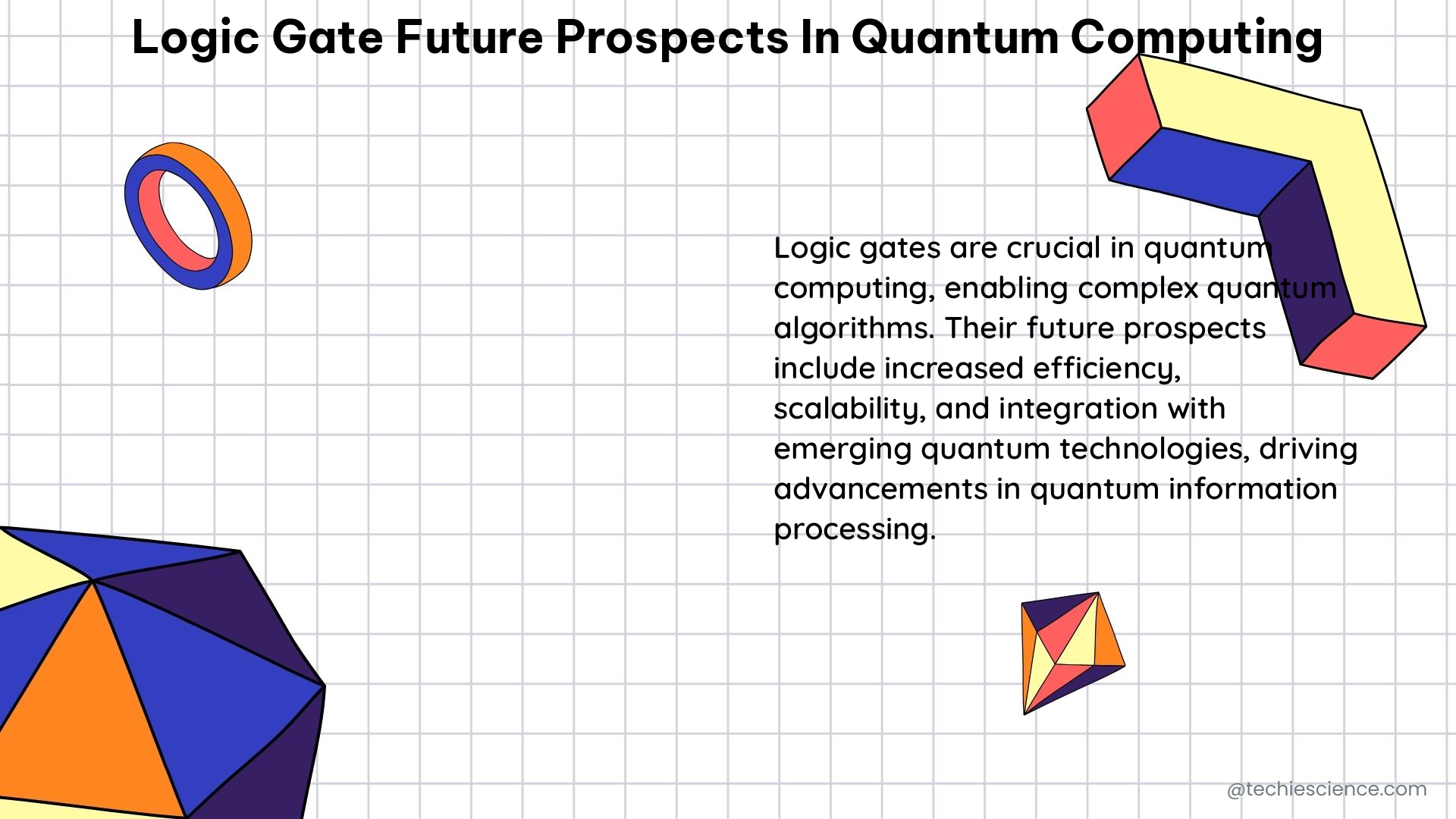The future prospects of logic gates in quantum computing are promising, with significant advancements made in recent years. Quantum logic gates, the fundamental building blocks of quantum computing, play a crucial role in the development of practical quantum computers.
Quantum Computing Progress and Prospects
In the realm of quantum computing, the number of qubits in small demonstration gate-based systems has steadily increased from a few to tens of qubits in recent years. These systems have paved the way for the construction of noisy intermediate-scale quantum (NISQ) systems with hundreds of higher-quality qubits. However, the realization of a scalable, fully error-corrected quantum computer capable of a larger number of operations remains a significant challenge.
Figure 1: Quantum computing progress and prospects, including the number of qubits in demonstration gate-based quantum computing systems and NISQ systems.
Data Point 1: The number of qubits in small demonstration gate-based quantum computing systems has increased from a few to tens of qubits in recent years.
Value 1: The average error rate of qubits in today’s larger devices would need to be reduced by a factor of 10 to 100 to enable logical computation at scale.
Measurement-Based Quantum Computation (MBQC)

Measurement-based quantum computation (MBQC) is an alternative approach to the standard circuit-based model, where entanglement is used as a resource, and local measurements on qubits are performed. This approach offers a potential solution for realizing a practical quantum computer.
In MBQC, a combination of two- and four-qubit measurements can be used to implement quantum logic gates. The ability to perform arbitrary four-qubit measurements means that a cluster state on the honeycomb lattice can be created by measuring its stabilizer operators, which define the cluster state model.
Theorem 1: A quantum circuit composed of Clifford gates and T gates can be simulated classically in polynomial time if the number of T gates is constant.
Quantum Logic Gates in Verilog
Quantum logic gates can be implemented in Verilog, a hardware description language widely used in the design and simulation of digital circuits. The implementation of quantum logic gates in Verilog begins with an introduction to quantum logic gates and how they manipulate qubits. It then describes different types of quantum gates, such as the Pauli X gate, CNOT gate, and Toffoli gate, and presents how these gates are realized and simulated in Verilog.
Electronics Formula:
The number of physical qubits required to create a useful number of effective logical qubits can be estimated using the formula:
Number of physical qubits ≥ 10 x (Average error rate of qubits)^(-1)
where the average error rate of qubits is expressed as a decimal value.
Electronics Example:
Example 1: If the average error rate of qubits in a quantum computing system is 0.01, then the number of physical qubits required to create a useful number of effective logical qubits can be estimated as:
Number of physical qubits ≥ 10 x (0.01)^(-1) = 1000 qubits
Electronics Numerical Problem:
Problem 1: A quantum computing system has an average error rate of 0.001 for its qubits. Estimate the number of physical qubits required to create a useful number of effective logical qubits.
Topological Protection in MBQC
One unique perspective on the future prospects of logic gates in quantum computing is the potential for topological protection in measurement-based quantum computation (MBQC). Topological protection arises from the fact that MBQC is robust against certain types of errors, such as local perturbations, due to the non-local nature of entanglement in the cluster state. This topological protection gives rise to a high threshold in the surface-code quantum computation, which is intensively pursued in circuit-model-based quantum computers using a two-dimensional architecture. The recent development of a general framework that translates a fault-tolerant procedure for stabilizer codes to a measurement-based protocol further highlights the potential of topological protection in MBQC.
Measurement 1: Repeated measurements of quantum circuits yield discrete probability distributions over all possible states of a quantum Boolean network (QBN), and the similarity between two such distributions is quantified using the fidelity measure.
In summary, the future prospects of logic gates in quantum computing are promising, with significant progress made in recent years. The development of scalable, fully error-corrected machines and the advancement of MBQC are two promising approaches for realizing practical quantum computers. The implementation of quantum logic gates in Verilog is another crucial step towards the development of error-free quantum computers.
References:
1. National Academies of Sciences, Engineering, and Medicine. (2019). Quantum Computing: Progress and Prospects. The National Academies Press.
2. Raussendorf, R., & Briegel, H. J. (2001). A one-way quantum computer. Physical Review Letters, 86(22), 5188-5191.
3. IonQ. (2021). IonQ Reports Breakthrough in Quantum Computing with 99.9% Fidelity. IonQ.
4. Implementation of Quantum Logic Gates (1).pptx. (2023).
5. Preskill, J. (2018). Quantum Computing in the NISQ era and beyond. Quantum, 2, 79.

The lambdageeks.com Core SME Team is a group of experienced subject matter experts from diverse scientific and technical fields including Physics, Chemistry, Technology,Electronics & Electrical Engineering, Automotive, Mechanical Engineering. Our team collaborates to create high-quality, well-researched articles on a wide range of science and technology topics for the lambdageeks.com website.
All Our Senior SME are having more than 7 Years of experience in the respective fields . They are either Working Industry Professionals or assocaited With different Universities. Refer Our Authors Page to get to know About our Core SMEs.